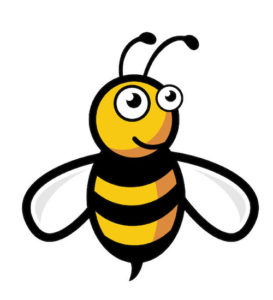Doctors’ Notes
BackBee & Wasp Stings
Bee and wasp stings are never fun, but one way or another, most of us experience them at least once in our lifetime.
 For some, a sting from one of these insects is an unharmful little stick to your skin that happens before you realize it. For the few children who are allergic, a bee or wasp sting can ultimately be life-threatening.
For some, a sting from one of these insects is an unharmful little stick to your skin that happens before you realize it. For the few children who are allergic, a bee or wasp sting can ultimately be life-threatening.
Facts About Stingers/Removal
Bees have a stinging contraption that becomes lodged in the skin and rips away from the insect’s body following a sting. The stinger of a bee contains a sac full of venom which is released in a matter of seconds after a sting. Removing the stinger immediately may limit the amount of venom injected into the skin.
In most cases, bee venom is not harmful to the human body. Kids allergic to bees may experience more severe reactions when exposed to this venom. (See “Systemic Allergic Reactions/Anaphylaxis” below.)
Stingers that remain in the skin should be removed eventually, because they can occasionally cause foreign body reactions and cause infection.
If you or your kids see the stinger, they can be flicked off right away. If the stinger is deeper into the skin, use tweezers or a grasping tool to remove the stinger. To eliminate the risk of another prick from the stinger, avoid using your own fingers!
Local Reactions
Most people develop only minor reactions that occur directly where the stinger penetrates the skin. A typical reaction is redness and a small area of painful swelling that will develop in a few minutes and resolve within a few hours. About 10% of people develop an exaggerated response to stings that causes redness, itching, pain, and swelling to the sting site. The site may become enlarged, but this will only last 5-10 days.
These local reactions can be treated at home with a cold compress. If the sting occurs to an arm or leg, raise the extremity above the level of your heart when using a cold compress; this will help reduce the inflammation and create a faster healing time.
Motrin or Tylenol can be used to help alleviate the pain kids may experience. If itching persists, give your child an antihistamine such as Zyrtec or Claritin.
If these symptoms aren’t resolving or are worsening, give us a call.
Prevention
Stings will most likely happen to us all at least once. Here are some tips for helping your child steer clear of bees and wasps:
• Avoid areas where bees might gather. Common places are garbage, dog droppings, trees with fallen fruit, and food/beverages left outside.
• Encourage your child to wear shoes and socks when running or playing in the grass.
• When playing in wooded areas, have your child wear long pants and a long-sleeved shirt.
• Teach your child not to swat at bees/wasps when they’re near. This will cause them to feel threatened, which may provoke them to sting you.
• If you know your child is allergic, keep an epinephrine pen handy at all times.
Systemic Allergic Reactions/Anaphylaxis
The terms “systemic allergic reaction” and “anaphylaxis” can be used interchangeably. Both describe a serious allergic reaction that can rapidly worsen. A single sting is sufficient to cause a severe reaction.
Research shows that approximately 5% of the population has an allergy to the venom in stingers, but anaphylaxis occurs in 0.3-3% of bee/wasp stings. Symptoms can be seen directly after a sting or up to an hour or two after it occurs.
Symptoms to watch for include:
• Difficulty breathing
• Swelling to the face, mouth, or throat
• Wheezing
• Trouble Swallowing
• Hives-like rash that spreads to areas beyond the location of the sting
• Lightheadedness/Dizziness
• Loss of consciousness/fainting
• Nausea or vomiting
If your child shows any of these signs or symptoms, call 911, or travel to your nearest emergency room for immediate treatment. If you have an EpiPen for a bee/wasp allergy, inject it into your child immediately.
Dr. Amy Maddalena, a Kids Plus Provider since 2006, is the Medical Director of our Breastfeeding Center of Pittsburgh.
Justin Allen spent a rotation at Kids Plus as a PA Student from Slippery Rock University.